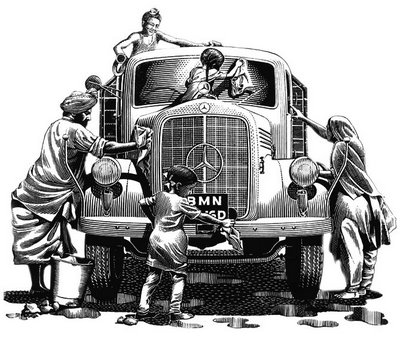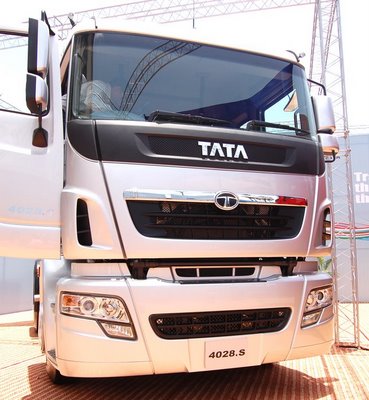
By keeping customer needs in focus, Tata Motors has scripted an automobile revolution that has secured triumph for the company and recognition for the country. Over 40 lakh Tata vehicles ply on Indian roads since the first one rolled out in 1954. Today seven out of every 10 trucks on Indian roads sport the trusted Tata name. The company has been at the forefront of a movement that has set a whole nation on the move.
The seeds of this success were sown when Telco entered into a technical and financial collaboration with Daimler-Benz AG (now DaimlerChrysler) to launch the Tata Mercedes Benz. This was the first acquaintance that Indians had with an Indian vehicle manufacturing company. The collaboration with Daimler-Benz AG ended in 1969, but Telco had by then built up enough steam to power forward on its own.
Until June 5, 1969, the trucks bore the Mercedes “star” after which it was replaced by the Tata “T”. The roadmap for the future was laid out by JRD Tata and Sumant Moolgaokar who, sensing a boom in the automobile industry, decided to set up a second factory in Pune. The rest, as they say, is history.
During June 1969-December 1976, Telco gave the market as many Tata vehicles as the Tata Mercedes-Benz vehicles produced in the earlier 14 years. Over the next 40 years, the brand that epitomised movement and progress in this country itself embarked on a journey of evolution and learning. Imbued with the pioneering spirit and driven by the pursuit of automotive excellence, Tata Motors forged a reputation that made it India’s largest and one of the world’s top five automobile manufacturing companies.
From 1986 with the Indian automobile scene witnessing a radical change, Telco’s R&D; came up with the 407 series – the truck (a light commercial vehicle), designed in-house, was created for Indian conditions, not modified to suit Indian conditions as others were. Approximately 32 applications for LCV manufacture had been approved by the Government, and most with foreign collaboration. To this, Telco’s R&D; had a savvy market answer – the 407 specifically created for Indian roads and quick to become the market favourite.
Along the way, Tata Motors introduced a range of products and made additions and improvements to a host of others. The appreciation that these launches and improvements were met with validated the company’s focus on customer satisfaction. Often the fame and goodwill transcended mere geographical boundaries.
Tata Motors aimed to increase its presence worldwide. In 2004, it acquired Daewoo Commercial Vehicle Company of South Korea. The main reason behind the acquisition was the companys plan to reduce domestic exposure.
On its journey to make an international foot print, it also made significant acquisitions and joint ventures to improve its bus business. In 2005, sensing the huge opportunity in the fully-built bus segment, Tata Motors acquired 21 per cent stake in Hispano Carrocera and introduced its high-end inter-city buses in the country. It has also formed a 51:49 joint venture with Marcopolo S.A., a Brazil-based global leader, in bus body building, for city and midi buses. All these initiatives have already started showing the desired results.

